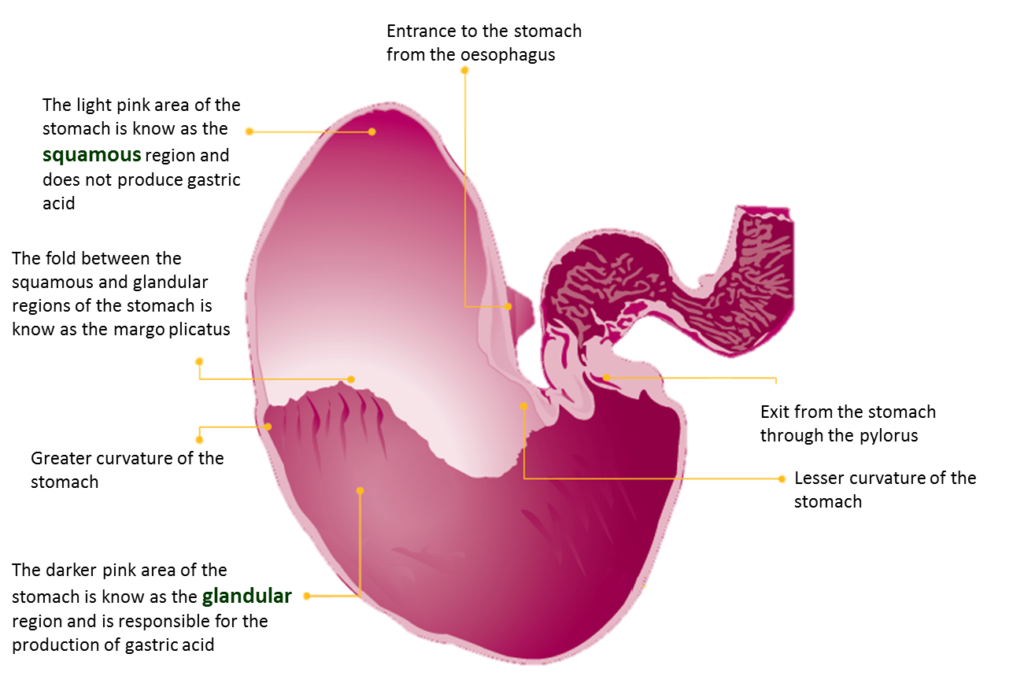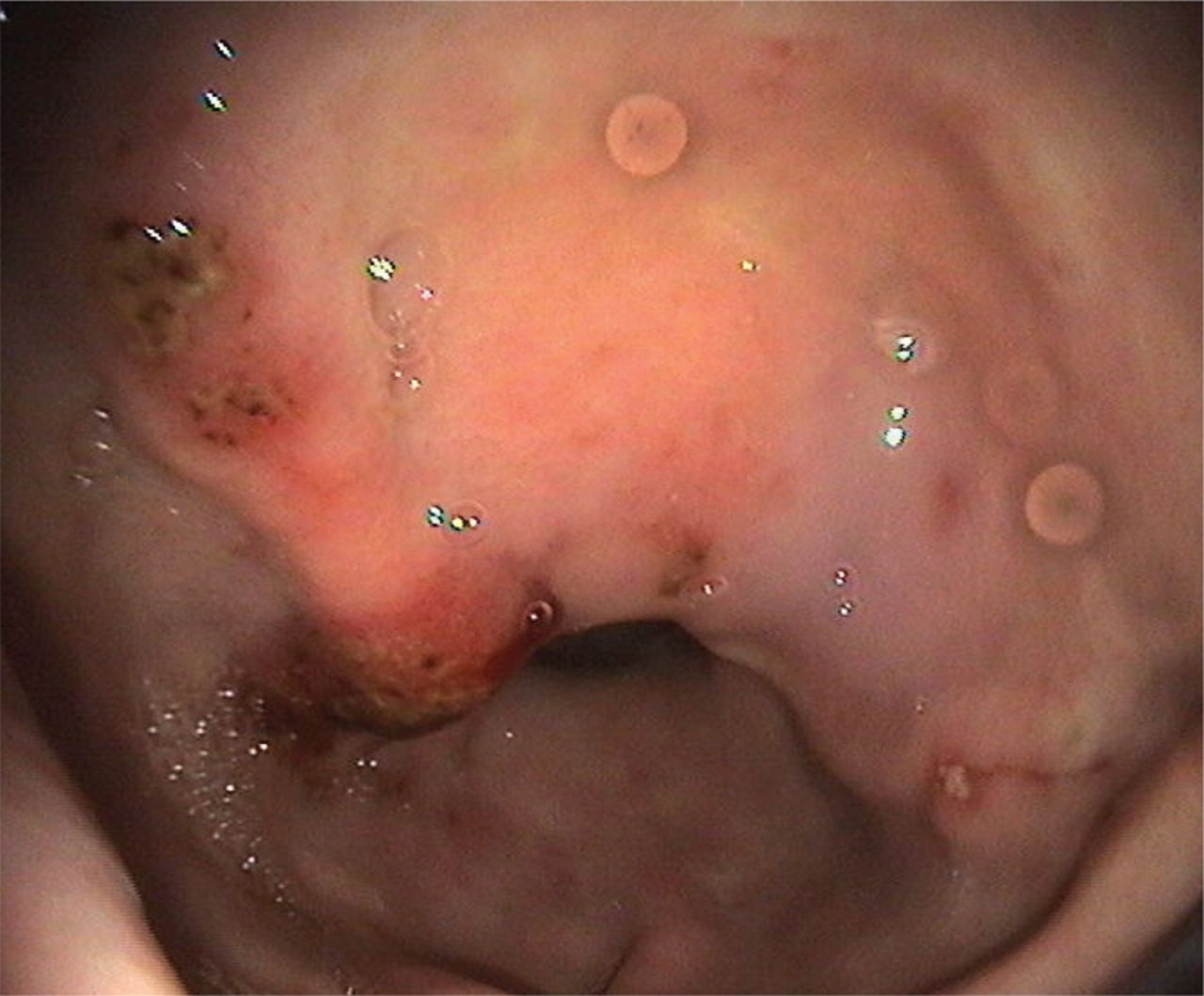Could your horse have gastric ulcers?
Gastric ulcers affect over 50% of horses1 and can affect any horse at any age. There are two forms of equine gastric ulcers; squamous ulcers and glandular ulcers. These two forms of the disease relate to the two regions of the equine stomach.

Squamous ulcers
The lighter pink, squamous region of the equine stomach sits above the darker pink, acid-producing glandular region. In normal circumstances it does not come into contact with gastric acid and therefore has no natural defences against the erosive effects of the acid.
In some circumstances the squamous region does come into contact with gastric acid. Repeated or prolonged exposure results in the formation of squamous ulcers1.
Glandular ulcers
The underlying cause of glandular ulcers is not well understood and is the focus of much study. They are found in the darker pink, glandular region of the stomach. The glandular region is responsible for the production of gastric acid and therefore has natural defences in place to protect the stomach wall from any damage caused by acid. It is thought that glandular ulcers result from a breakdown in these natural defences, therefore making the stomach lining more susceptible to the erosive effects of gastric acid1.
Do you know the signs?
Although over 50% of horses1 suffer from gastric ulcers, many horses show only very subtle signs. These signs are often difficult to spot and can include any of the following1:
Poor performance
Change in behaviour
Reduced appetite
Pain on girth tightening
Poor body condition
Weight loss
Colic
Which horses have an increased risk of gastric ulcers?
Several risk factors have been shown to increase the likelihood of equine gastric ulcers:
Change of routine
Intense work2
Intermittent access to water1
Isolation1
Erratic feeding and feeding ‘concentrates’1
Travelling3
Box rest
If your horse experiences any of the factors above, any changes you can make to reduce the impact of these will help reduce their risk of developing gastric ulcers. However, there are some circumstances where one or more of the risk factors are unavoidable, for example travelling to competitions. In these situations please call us to discuss preventative treatments that may be suitable.
What to do if you suspect your horse could have gastric ulcers?
If you’re worried about gastric ulcers in your horse, please phone us today on 07747 771182 and we will be more than happy to help. Alternatively follow this link for information about our upcoming gastroscopy clinic offering reduced price gastroscopy:
Upcoming gastroscopy clinic!
Jess x
Jessica Putnam MRCVS
References:
Sykes BW, et al. ECEIM Consensus Statement – EGUS in Adult Horses. J Vet Intern Med 2015; 29: 1288-1299.
Lorenzo-Figueras M et al. Effects of exercise on gastric volume and pH in the proximal portion of the stomach of horses. AVJR 2002; 63(11): 1481-1487
McClure SR et al. Gastric ulcer development in horses in a simulated show or training environment. JAVMA 2005; Vol 227 (5): 775-777

